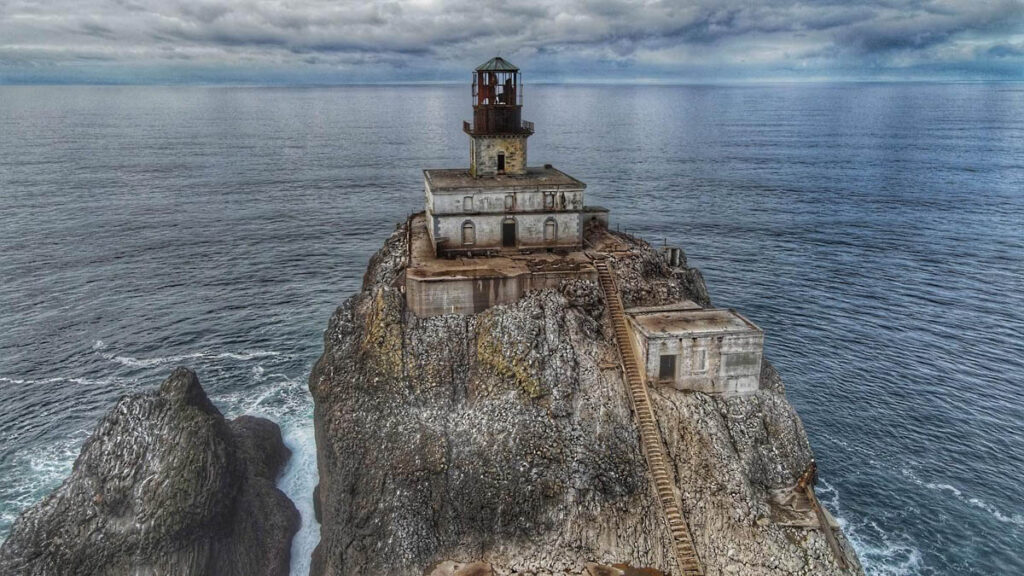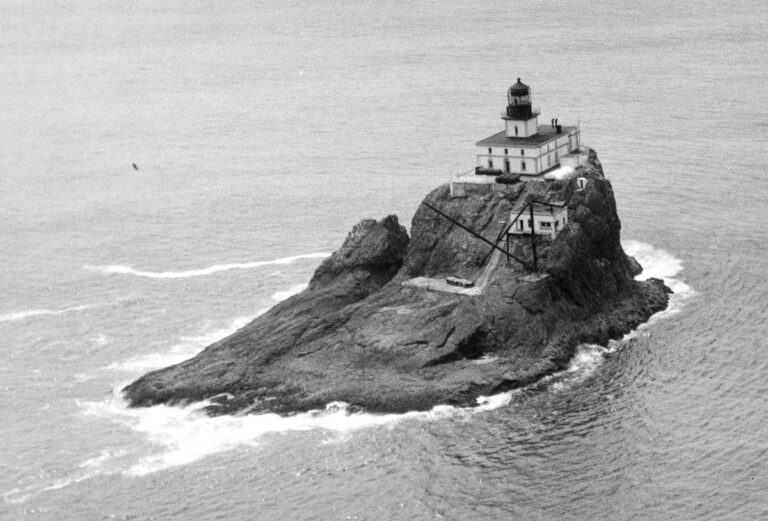Cost Of Penalty For Visiting: Up to $1,000
Tillamook Rock Light is an inactive lighthouse on the Oregon coast of the United States, located about a mile from Tillamook Head. The lighthouse was built atop a rock in 1880, which was a highly risky construction strategy. The lighthouse was given the nickname “Terrible Tilly” (or “Tillie”) because of the erratic weather conditions in the area and the dangerous commute for both keepers and suppliers. It is said to be cursed by gods, spirits, and/or ghosts. These rumours have followed the lighthouse since its inception, and Native American legends date back even further. The United States Congress commissioned the lighthouse in 1878, and it took over 500 days to complete.
Shortly before the lighthouse was completed in January 1881, the barque Lupatia was sailing in thick fog and high winds when the ship’s Captain noticed that they were too close to shore. Wheeler, the official in charge of the lighthouse’s construction, heard the voices of the panicked crew and immediately ordered his men to place lanterns in the tower and light a bonfire to signal the ship that they were approximately 600 feet (200 m) from the rock. The ship appeared to have been able to turn itself toward returning to sea. However, it quickly disappeared into the fog, and Wheeler was not able to hear the crew. The next day, the bodies of all 16 crew members were found washed up on shore of Tillamook Head. The only survivor of the wreck was the crew’s dog.
On January 21, 1881, the beacon was lit for the first time and four keepers were assigned to it. Duty at the Tillamook Light was considered difficult due to its isolation from civilization and harsh weather conditions. Throughout its history, the area has been hit by large, violent storms that damaged the lighthouse with large waves, winds, and debris, and the tower has flooded several times after the lantern room windows were broken by large debris. In 1897, a telephone line was installed, but it was cut shortly after by a storm. During a storm in 1912, 100 tons of rock were reportedly shorn from the western end of the rock, and the windows were eventually cemented over and replaced with small portholes.

On October 21, 1934, a large storm destroyed the original fresnel lens, levelling parts of the tower railing and severely damaging the landing platform. Winds gusted to 109 mph (175 km/h), launching boulders and debris into the tower, causing damage to the lantern room and destruction of the lens. The derrick and telephone lines were also destroyed. After the storm passed, communication with the lighthouse was cut off until keeper Henry Jenkins constructed a makeshift radio from the damaged foghorn and telephone to notify officials. Diesel engines were installed to generate electricity for the light and station. Repairs to the lighthouse cost $12,000 and were not completed until February 1935. The Fresnel lens was replaced by an aerobeacon and a metal mesh was placed around the lantern room to protect the tower from large boulders.
The lighthouse was decommissioned in 1957 and replaced by a whistle buoy, making it the most expensive lighthouse in the United States to operate.
Over the next 20 years, the lighthouse changed hands several times. In 1980, a group of realtors bought it and established the “Eternity at Sea Columbarium”, which opened in June of that year. After interring approximately 30 urns, the Oregon Mortuary and Cemetery Board revoked the columbarium’s license in 1999, and it was rejected upon re-application in 2005.
Access to the lighthouse is severely restricted, with a helicopter landing being the only practical way to reach the rock, and it is off-limits to even the owners during the seabird nesting season. The structure was added to the National Register of Historic Places in 1981, and it is part of the Oregon Islands National Wildlife Refuge. Thousands of sea lions, seals, and seabirds now frequent the lighthouse rock and the buildings are said to be in need of complete renovation due to damage from storms, nesting birds and sea lions.
In April 2022, “Eternity at Sea” announced that the property was for sale. Owner Mimi Morissette has listed the property for $6.5 million.
As of the publication of this article, it is unclear whether the property has been sold.







